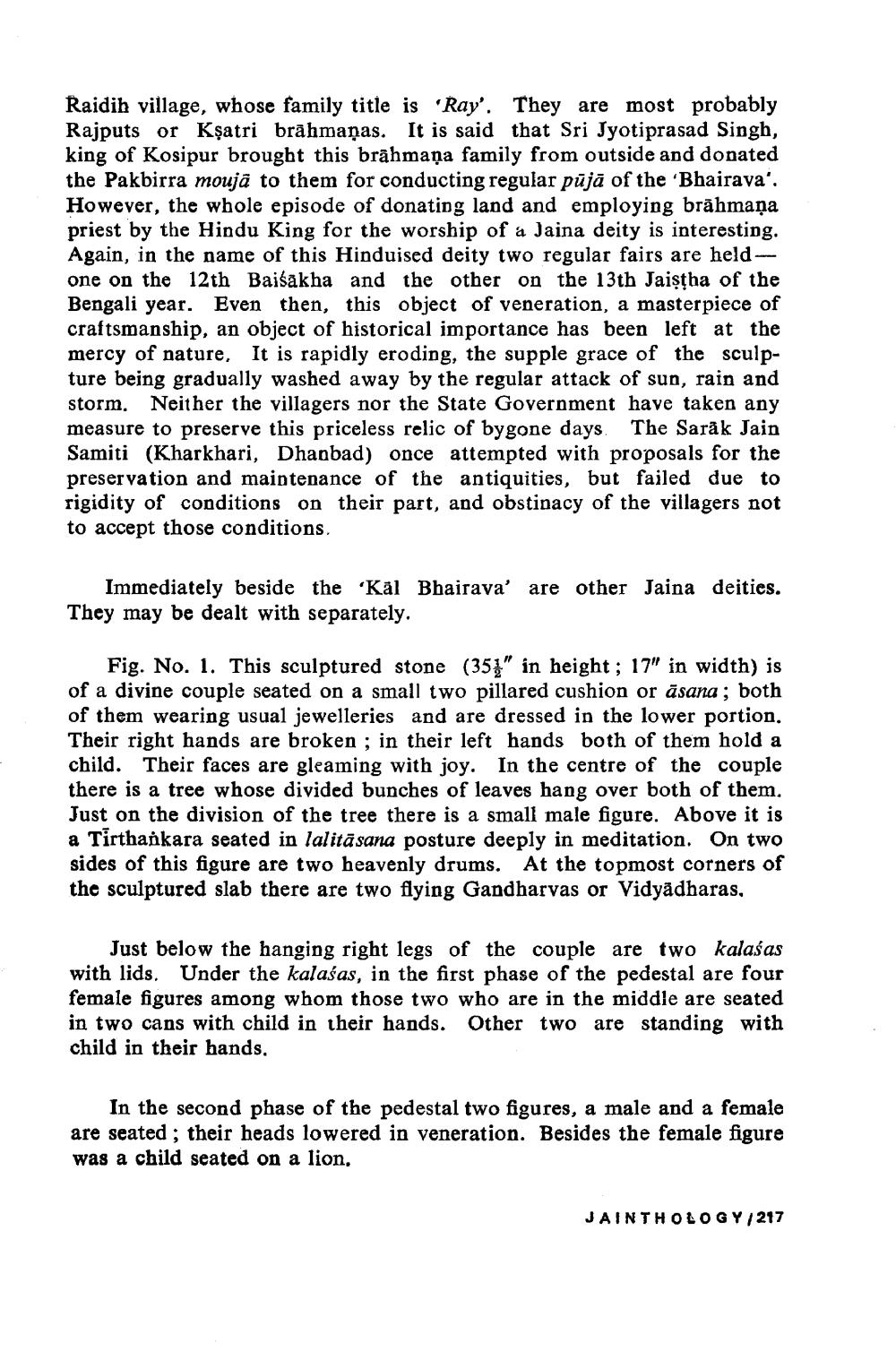________________
Raidih village, whose family title is 'Ray'. They are most probably Rajputs or Kşatri brāhmaṇas. It is said that Sri Jyotiprasad Singh, king of Kosipur brought this brāhmaṇa family from outside and donated the Pakbirra moujā to them for conducting regular pūjā of the 'Bhairava'. However, the whole episode of donating land and employing brāhmaṇa priest by the Hindu King for the worship of a Jaina deity is interesting. Again, in the name of this Hinduised deity two regular fairs are heldone on the 12th Baisakha and the other on the 13th Jaiştha of the Bengali year. Even then, this object of veneration, a masterpiece of craftsmanship, an object of historical importance has been left at the mercy of nature. It is rapidly eroding, the supple grace of the sculpture being gradually washed away by the regular attack of sun, rain and storm. Neither the villagers nor the State Government have taken any
eserve this priceless relic of bygone days. The Sarak Jain Samiti (Kharkhari, Dhanbad) once attempted with proposals for the preservation and maintenance of the antiquities, but failed due to rigidity of conditions on their part, and obstinacy of the villagers not to accept those conditions,
Immediately beside the Kal Bhairava' are other Jaina deities. They may be dealt with separately.
Fig. No. 1. This sculptured stone (351" in height; 17" in width) is of a divine couple seated on a small two pillared cushion or āsana; both of them wearing usual jewelleries and are dressed in the lower portion. Their right hands are broken ; in their left hands both of them hold a child. Their faces are gleaming with joy. In the centre of the couple there is a tree whose divided bunches of leaves hang over both of them. Just on the division of the tree there is a small male figure. Above it is a Tirthankara seated in lalitā sana posture deeply in meditation. On two sides of this figure are two heavenly drums. At the topmost corners of the sculptured slab there are two flying Gandharvas or Vidyadharas,
Just below the hanging right legs of the couple are two kalaśas with lids. Under the kalaśas, in the first phase of the pedestal are four female figures among whom those two who are in the middle are seated in two cans with child in their hands. Other two are standing with child in their hands.
In the second phase of the pedestal two figures, a male and a female are seated; their heads lowered in veneration. Besides the female figure was a child seated on a lion.
JAINTHOLOGY/217




